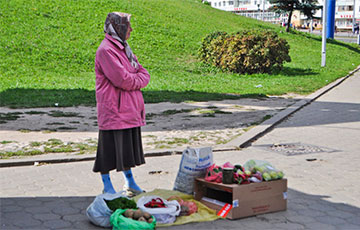Economist: Poverty Level In Belarus Will Exacerbate
11- 6.09.2022, 12:08
- 3,342

The government is not able to effectively review the mechanisms of supporting the population.
In Belarus, the risks of an increase in the level of poverty are growing. The most vulnerable categories are families with children, people with disabilities, and the unemployed. “Belarus has little time left to get off the trajectory of impoverishment of the population,” economist Oleg Mazol expressed this opinion in the BEROC Expert View bulletin (Kyiv).
The government is unable to effectively review the mechanisms of supporting the population
Oleg Mazol, a researcher at BEROC (Kyiv), calls the excess of the number of dismissed over the number of hired as the main risk. In recent months, the gap between them was 15-30%, depending on the month. The second risk is the deterioration of the employment structure towards people with lower wages. This is primarily due to the relocation of highly paid workers. Thus, in the first half of the year, in IT, the number of dismissed employees was 4 times higher than the number of those hired. The third factor is the decline in the availability of social services.
These risks will be aggravated by the distortion of statistics and the concealment of data on the state of affairs, the economist believes. As an example, he cites the difference in approaches to determining the level of poverty. If, according to Belstat, in 2009-2019, the level of absolute poverty was 5-7% of the country's population, then calculations using the World Bank methodology showed a level of 31%. Indirectly, a significant level of poverty is indicated by the fact that Belarusian families spend about 40% of consumer spending on food.
“Due to the underestimation of the real level of poverty in the country, the government is unable to effectively review the mechanisms used to support the population below the poverty line, and loses incentives to search for more effective economic policy instruments,” explains The most vulnerable are families with children, the unemployed, and people with disabilities According to the economist, families with children, citizens with disabilities and the unemployed are most at risk of poverty. In 2020, 10.3% of families with children had an income below the subsistence minimum budget (less than 250 rubles per person). At the same time, the level of social support for such families is declining. Despite the fact that from 2016 to 2020, government spending on such support increased from 1.88 billion rubles to 2.42 billion rubles, the number of children receiving benefits decreased from 30.2% to 24.9%. In Belarus, more than 500 thousand people need support due to their disability. However, the level of public spending to support them remains low, writes Oleg Mazol. For example, health assistance for this category of people fell from 1.5 million rubles in 2016 to 0.9 million rubles in 2020. 112.4 million rubles were allocated for the payment of state targeted social assistance in 2020. Of these, only 0.4 million rubles were sent to families raising children with disabilities. The low level of support remains for people who have lost their jobs. The maximum unemployment benefit in Belarus is 45% below the living wage budget. Those who have lost their jobs and are registered are paid 8-22 euros per month. And those who are not registered are burdened by the authorities with additional financial obligations. “In Poland, the level of unemployment benefits is 139-210 dollars per month, in Lithuania — at least 120 euros, in Latvia — 25-65% of the average salary of a citizen over the past 12 months,” compares the economist. Within the framework of the existing model, the expert notes, there are no prospects for reducing the level of poverty. “If we characterize the overall results of the use of financial support for the population, then despite the increase in social payments to the population from 12.8 billion rubles to 19.4 billion rubles in 2016-2020, the expected increase in social support to the population did not occur,” the expert notes. “The share of social payments in the total cash income of the population decreased by 0.4 percentage points, the share of social payments in GDP — by 0.3 percentage points. As a result, the share of state support in various forms (transfers to the population) in the total income of the population decreased from 24.2% to 23.1%. The effectiveness of social support measures can also be concluded from the fact that, in the structure of targeted social assistance, about half of all payments (49.8%) represent the allowance for the purchase of diapers. The low level of support of the population is indicated by the difference in unemployment data. If in the bodies for labor and employment in 2020 there were only 7.2 thousand such people, then 206.2 thousand people were actually unemployed. The poverty rate in the country will rise The government's plans to significantly increase exports to Russia and China are not being implemented, the economist believes, which means that domestic companies with a decrease in demand will more actively lay off workers or reduce working hours or wages. This will affect the growth of explicit and hidden unemployment. It will be aggravated by the migration of workers with high incomes, as this will lead to a reduction in the overall level of income of the population and effective demand. “There can be only one way out of such a situation: an end to political repressions, an end to the Belarusian regime's support for Russia's military aggression against Ukraine, and the beginning of a dialogue within the Belarusian society. Otherwise, the impoverishment of Belarusians will continue, and next year we will see a further increase in poverty. There is little time left for Belarus to get off the path of impoverishment of the population,” the economist concludes.









